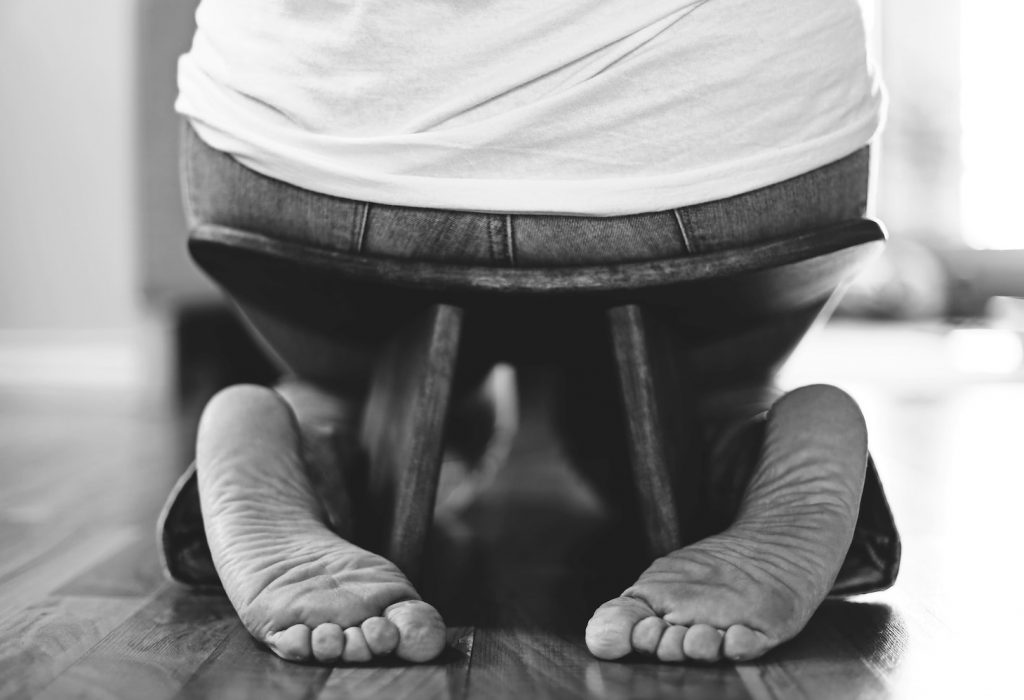For about 15 years, my spiritual practice was distance running. The repetitive sound of my feet landing on the earth, paired with the sensation of deep breathing, instilled a feeling of close connection to the world around me. Running was a solitary activity, a time to get reacquainted with myself and observe my body and mind. Trail running in particular required a heightened vigilance: the forest paths I ran were rough and rocky, so I needed to place my full attention on where my feet fell. When my mind wandered, I could always rely on a raised tree root or a mud-streaked slope to bring me back to my body.
What I struggled with most on tiring days wasn’t hitting “the wall”—a notorious mental and physical state of complete exhaustion and despair. It wasn’t the soaring August heat waves, the grueling hills, or the searing calf cramps and blisters on my heels. The hardest part of each run was starting: lacing up my running shoes, standing up, and walking out the door.
Before I set out for a run, I experienced a severe case of inertia. This heavy sluggishness I felt was convincing. I often stalled by checking my email, staring out the window, or taking on busy tasks like rearranging my refrigerator magnets or refolding the throw blankets on the sofa. This tendency lured me into a confusing mental dialogue fraught with anxiety and questions. If I want to go running, why am I dreading it so much?
Related: Calming the Not Now Mind
As I deepened my meditation practice, the reasons behind my procrastination became much clearer. Sometimes, my run felt effortless. My legs carried my body without any trouble, and my breath remained fluid and uncompromised. But there was always the potential of suffering. I could get an unforgivable cramp, pull a muscle, or roll an ankle. I never knew if my experience was going to feel blissful and energizing or painful and wracked with fatigue. That uncertainty at the start of my practice was sometimes so scary that it was immobilizing.
These days, I don’t run as much as I used to. But I do maintain a daily meditation practice and often face the same challenge of starting. This kind of hesitation before taking my seat isn’t all that unusual. Many people believe meditation is something they want to try, but feel hesitant to sit with themselves because of what the practice can stir up. Sure, we may relive fond memories of childhood summers at the beach or have loving thoughts about a dear friend. These often arrive gently and leave us with pleasant sensations of ease and peace. On the other hand, sitting face-to-face with blinding terror, unshakeable grief, and gutting despair can be extremely painful—especially when we don’t know it’s coming.
Related: The Point of Contact
When we face the uncertainty of what may arise when we commit to looking deeper into ourselves, it’s easy to understand why we may prefer to reorganize our eating utensils or scrub the grout between the tiles on the kitchen floor. Meditation teaches us that we have the ability to notice our choices, laugh a bit, and then maybe decide to investigate why we act in particular ways.
The practice of meditation also inherently teaches us how to start—so much so, in fact, that starting our practice can become less of a challenge. We experience the first step of starting by taking our seat and moving deeper into the body through conscious breath work or mantra recitation. After that, every time thoughts, emotions, or sensations in the body lead us astray, we practice starting again by honoring our decision to return to the breath. Every time we come back, it is a fresh start, or a new beginning.
Starting to meditate can feel a bit like a leap of faith. We don’t know what we’re going to find, but we decide to start anyway. The word start itself comes partly in the Old English word styrtan, which means “to leap.” The word is also derived from the German word stürzen, which means “to fall headlong” or “to fling.” I believe a leap into the uncertain practice of meditation isn’t so much rooted in faith as it is in our belief in our own potential to emerge both unscathed and better informed. If it’s too painful, we can always cut the run short. We can interrupt our practice, open our eyes, take a few deep breaths, and rest.
[This story was first published in 2017]
Thank you for subscribing to Tricycle! As a nonprofit, we depend on readers like you to keep Buddhist teachings and practices widely available.
